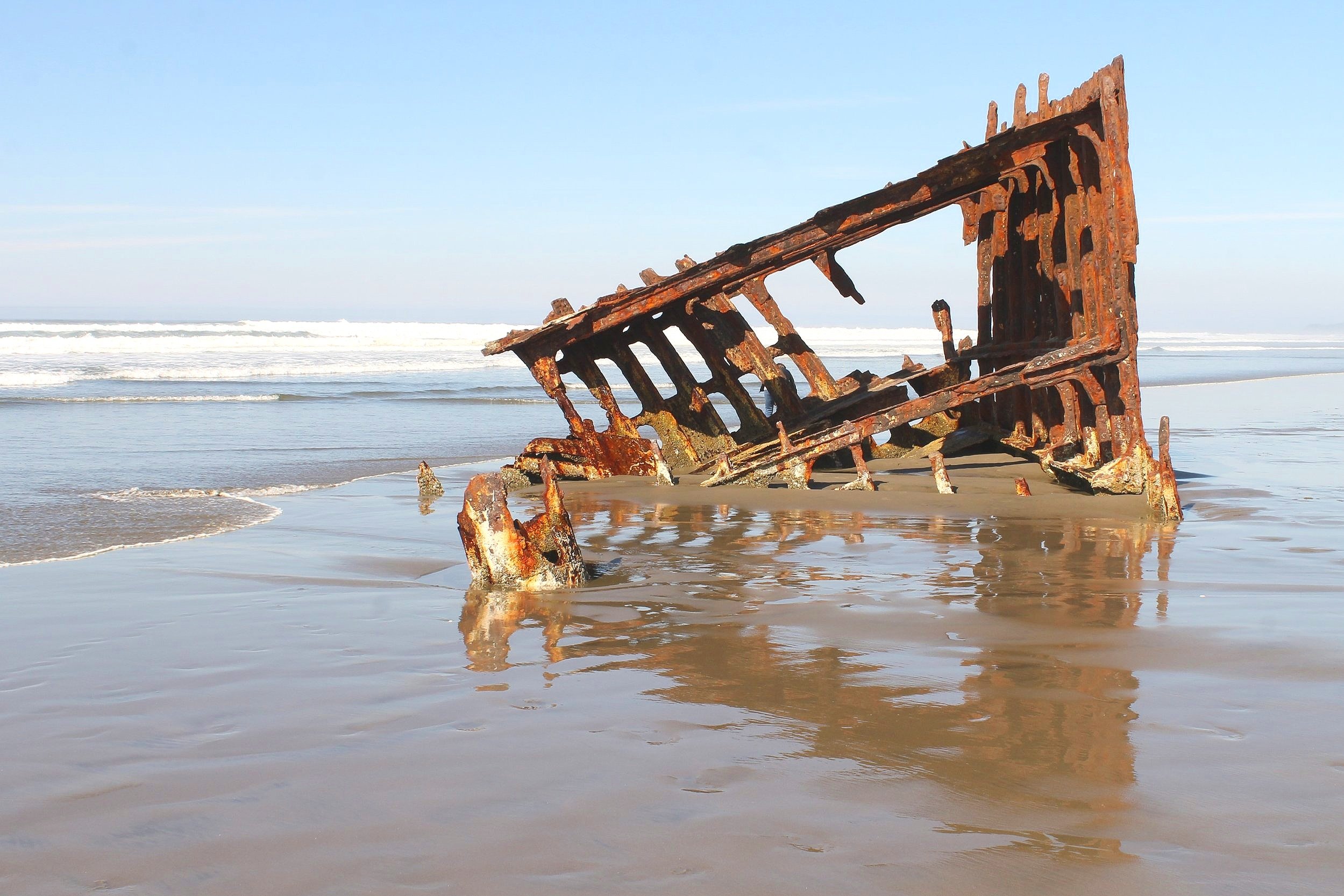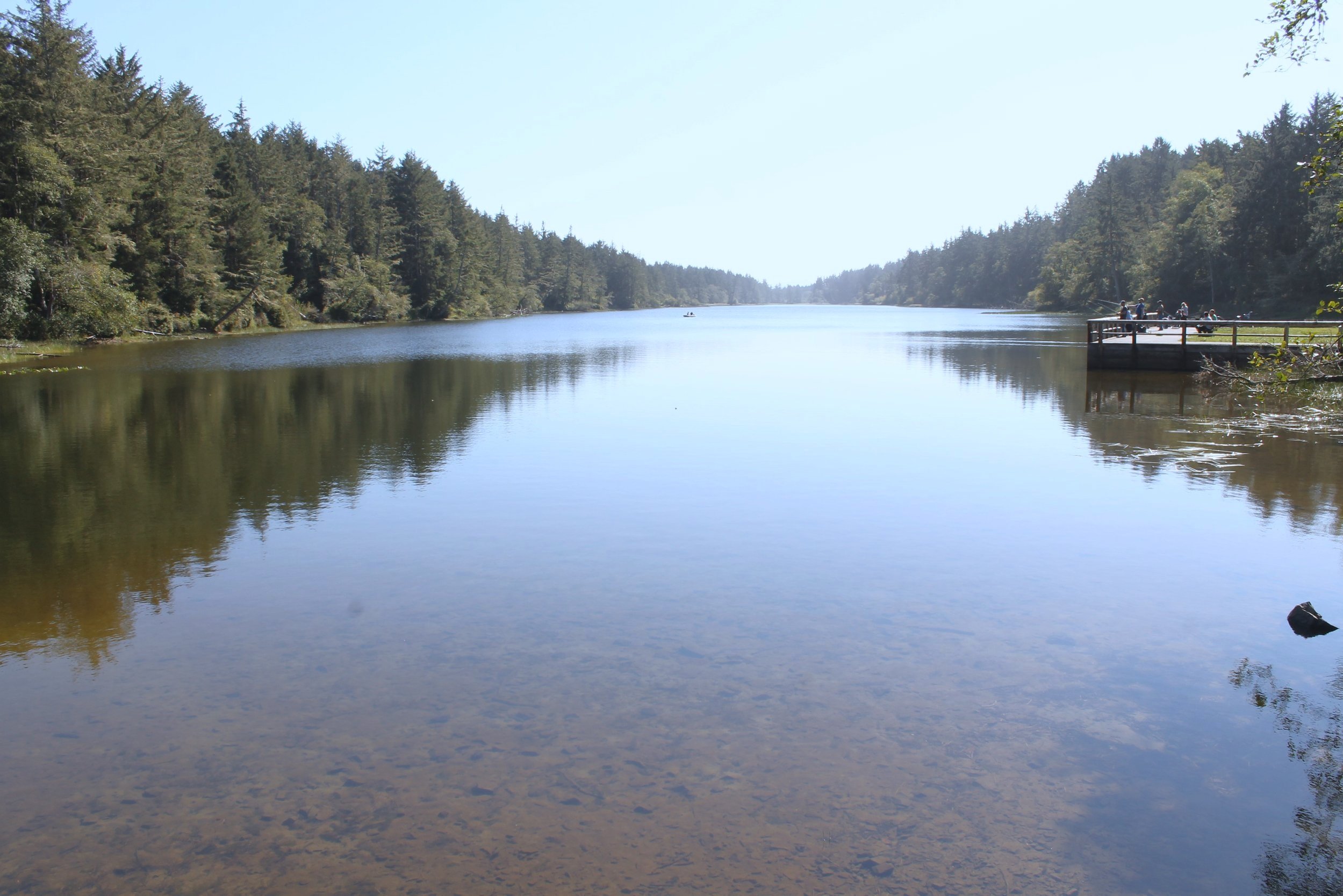Best 6 Things to Do at Fort Stevens State Park
Just outside of Astoria, Oregon, you’ll find Fort Stevens State Park at Oregon’s northwestern corner where the Columbia River flows out into the Pacific Ocean. This massive park is filled with some of the state’s most memorable natural beauty and historical attractions. Whether you plan to visit for a couple of hours, spend the day, or camp overnight, there is plenty to explore. Here are the best things to do in Fort Stevens State Park.
South Jetty Observation Tower
Know before you go:
Some areas of Fort Stevens State Park require the Oregon State Park pass. It costs $10 for a day pass or $30 for an annual pass. You can purchase a pass in the park.
Other areas of the park are free to visit.
Fort Stevens State Park is dog-friendly.
There is a large campground with many types of camping options including tent sites, yurts, cabins, and full hook-up RV sites. You can reserve your site up to 6 months in advance through the Oregon State Park reservation system here.
There are areas in Fort Stevens State Park where you can drive on the beach. Signs in the park will specify where vehicles are allowed. Be aware that not all areas that allow driving are great places for it. My friends and I saw several vehicles get stuck in deep sand at the Jetty Road beach access.
Peter Iredale Shipwreck
Remains of the Peter Iredale
Distance: Less than 0.5 miles roundtrip to reach the shipwreck.
Pass required: None, free parking is available near the beach.
Amenities: Restrooms are near the parking area.
The Peter Iredale’s steel skeleton is one of the most haunting and iconic sights on the Oregon Coast. Slowly corroding metal beams remain from the 1906 shipwreck that occurred when winds drove the ship onto shore during a storm. Fortunately, all aboard the ship were able to make it to shore and survived to tell the tale. Not all sailors have been so lucky. Thousands of shipwrecks have occurred off the Oregon Coast and the turbulent waters where the Columbia River empties into the Pacific Ocean are notoriously dangerous.
What remains of the Peter Iredale is one of the most visible memorials to the hazards of sailing you can find on the Oregon Coast. It is also slowly disappearing. Exposed to the elements, including the waves of the Pacific, fragments of the ship continue to be lost to the ocean over time.
Unlike most shipwrecks, the hull of the Peter Iredale is easy to reach today, and seeing it is one of the best things to do in Fort Stevens State Park. If you can, visit during low tide when the shipwreck will be easiest to approach. There is a free public parking lot next to the beach. Climb over the dune and head toward the ocean. You’ll be able to see the shipwreck from the top of the dune. You can walk right up to the metal frame, touch it, and even climb on it.
2. South Jetty Observation Tower
South Jetty
Distance: 0.2 miles to reach the observation tower and jetty.
Pass required: None, free parking is available near the South Jetty Observation Tower.
Amenities: Restrooms are near the parking lot.
Waves hit the South Jetty
The South Jetty is a great place to feel the power of the Pacific Ocean. Before you reach the jetty, you’ll see the South Jetty Observation Tower. Climbing to the top of the tower provides incredible views of the Pacific and is one of the best things to do in Fort Stevens State Park.
Even in relatively calm weather, large waves roll in and crash against the piled stones of the jetty. The north section of the jetty was closed for repairs when I visited, but you can still visit the observation tower and take in the views from above, or head south along the jetty itself. Be on the lookout for the bobbing heads of seals in the water. Starting around mid-December, also watch for the spouts of migrating whales.
3. Coffenbury Lake
Coffenbury Lake
Distance: None to reach the lake. There is an easy, 2.5-mile loop to walk around it.
Pass required: Oregon State Park pass required. A pay station is available in the parking lot.
Amenities: Restrooms near the parking lot, picnic tables, covered picnic pavilion, boat ramp, and fishing dock.
In contrast to the waves of the Pacific Ocean, Coffenbury Lake is a tranquil retreat just down the road from the campgrounds of Fort Stevens State Park. Visiting this freshwater lake surrounded by Sitka spruce is one of the best things to do in Fort Stevens State Park when traveling with kids or with a friend group. Here are some suggestions for what to do there:
Paddle around the lake on a kayak or paddleboard.
Go for a hike. There is a flat, easy hiking trail encircling the lake that is a 2.5-mile loop beginning at the parking lot.
Go fishing in a boat or off the dock. The lake contains several species of fish and is stocked with trout.
Have a picnic.
Look for wildlife. Coffenbury Lake hosts many species including elk, deer, herons, ducks, and cormorants.
Go swimming. Unlike the ocean, the water in Coffenbury Lake is calm and relatively warm in the summer.
4. Fort Stevens State Historical Site
View from Battery 245
Pass required: Oregon State Park Pass required. There is a toll booth at the entrance.
Amenities: Visitor Center with restrooms.
Cannon on the West Batteries
History buffs won’t want to miss Fort Stevens State Historical Site, the former military base that gives the state park its name. The fort’s first structure was an earthen bunker created in 1864 during the Civil War. The fort was updated and expanded over the years, mostly around the turn of the century, to include concrete batteries that protected the mouth of the Columbia River. Fort Stevens was active through WWII when it saw its only action, missiles fired from a Japanese submarine.
Today, much of the fort still stands as a museum and historical site. Touring its extensive grounds is one of the best things to do in Fort Stevens State Park. Here are the things you can do there:
Check out the Visitor Center. Old photographs and exhibits show the history of the fort, including how it looked when it was active. There is also a small rose garden outside the building.
Take the self-guided tour around the fort. You’ll get a map when you arrive with information about all the structures on site.
Climb on the batteries of the fort to get a view from above.
Try out the frisbee golf course. Oddly enough, there is one.
Take a guided tour. Ask at the Visitor Center for details and the schedule.
Follow the Jetty Trail out to the Columbia River.
5. Trestle Bay
Trestle Bay
Pass required: None, free parking lot available.
Amenities: Restrooms near parking lot D (Wildlife Viewing Area).
Protected by the Clatsop Spit, Trestle Bay feels worlds away from the powerful waves of the Pacific Ocean. The water here is peaceful and calm, with Sitka spruce forests giving way to grassy dunes around the bay. Look for the long line of wooden trestles out in the water. They were once part of the railroad that transported supplies for the construction of the South Jetty.
If you have an interest in birdwatching, visiting Trestle Bay is one of the best things to do in Fort Stevens State Park. Look for species like pelicans, sandpipers, herons, gulls, and many others from the concrete hideaway at the Wildlife Viewing Area. The Oregon State Parks department also offers opportunities to go birdwatching with a Park Ranger. Check out their website for details.
6. Have dinner in Astoria
Rooftop patio at Fort George Brewery & Public House
Yes, this last entry is cheating a bit by not being in Fort Stevens State Park, but I strongly suspect you’ll be in the mood for a good dinner after a day spent exploring. I recommend heading 10 miles down the road to Astoria where you can find some great restaurants to grab a post-hike pizza and beer.
Fort George Brewery & Public House has three spaces that fill a city block in Astoria. There are over a dozen of their beers on tap at both their downstairs pub and upstairs pizzeria. On a nice night, sit out on the rooftop patio, which is surrounded by green plants as well as views of the Astoria-Megler Bridge and the Columbia River.
Outside the Fort Steven’s Visitor Center
In summary, the best things to do in Fort Stevens State Park are:
Peter Iredale Shipwreck
South Jetty Observation Tower
Coffenbury Lake
Fort Stevens State Historical Site
Trestle Bay
Dinner in Astoria
Enjoy your time in Fort Stevens State Park!
With love,
Emma
Looking for more to do at the Coast? From north to south, here are trip suggestions and travel tips for:
Also, check out my guides to the wildlife of the Oregon Coast and Oregon geology.











